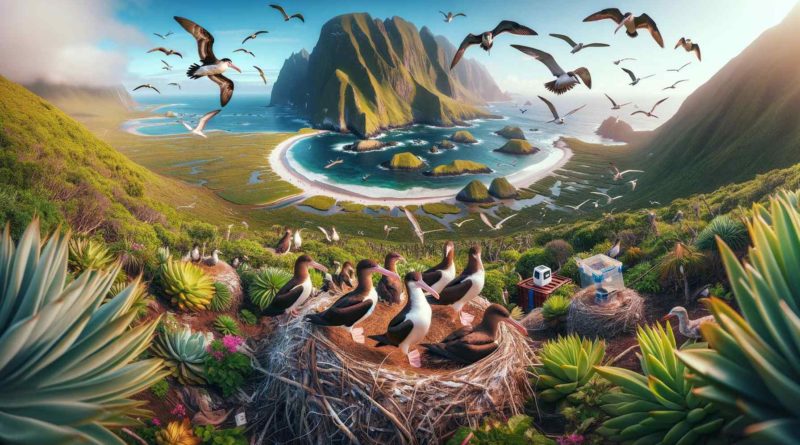Reviving Seabird Sanctuaries: The Story of an Island’s Transformation
The revival of the Peruvian diving petrel population on Chañaral Island is a heartening testament to the resilience of nature when given a chance to recover. This story begins with the island besieged by invasive species, leading to the near decimation of a seabird species that had thrived there for centuries. The Peruvian diving petrel, a bird once common in this unique ecosystem, faced extinction due to the disruptive impact of non-native rabbits.
In a bold conservation initiative that spanned several years, a coalition of environmental organizations, including Chile’s National Forestry Corporation (CONAF), the Universidad Católica del Norte’s Laboratorio de Ecología y Diversidad de Aves Marinas, and the globally renowned Island Conservation, embarked on a mission to eradicate the invasive rabbit population. Their efforts culminated in 2017 with the island declared free of the invasive species, setting the stage for an ecological rebirth.
“For the first time in over four decades, Peruvian diving petrels have four active natural nests on Chañaral Island,” announced the collaborative team, marking a significant milestone in the recovery of the species. This achievement was not just a win for the seabirds but also a beacon of hope for conservationists worldwide, demonstrating the potential for human action to reverse environmental damage.
The partnership’s success hinged on innovative strategies to encourage the seabirds’ return. Among these, the implementation of social attraction tools, such as solar-powered speakers playing petrel calls, proved instrumental. “The success of the social attraction tools used in the restoration of the Peruvian diving petrel colonies on Chañaral Island has been supported by evidence from parallel sites without sound systems where no signs of petrels have been recorded,” said Chañaral Island Park Ranger Cristian Rivera, underscoring the effectiveness of these novel conservation methods.
The story of the Peruvian diving petrel on Chañaral Island is a vivid illustration of the interconnectedness of ecosystems. Seabirds like the petrel play a crucial role in their environments, acting as vital links between land and sea. Their guano enriches the soil, fostering plant growth and supporting a diverse array of life forms. The return of these birds signifies not only the restoration of their population but also the beginning of a broader ecological recovery.
Island Conservation’s Island Restoration Specialist, María José Vilches, highlighted the broader ecological significance of the seabirds’ return: “Seabirds are critical connectors between the land and the sea, fertilizing the soil with their guano and nourishing the near-shore marine environment. It is incredibly encouraging to see the petrels returning to their island home to nest.”
The restoration efforts on Chañaral Island serve as a compelling case study in the power of targeted conservation initiatives. By removing invasive species and employing creative strategies to lure back native wildlife, conservationists have not only saved the Peruvian diving petrel from the brink of extinction but also restored the ecological balance of an entire island.
This remarkable story of ecological recovery underscores the importance of perseverance, innovation, and collaboration in the field of conservation. It demonstrates that with concerted effort and strategic intervention, it is possible to reverse the tide of environmental degradation and give endangered species a fighting chance at survival.
As the Peruvian diving petrel begins to thrive once again in its ancestral home, the project on Chañaral Island stands as a testament to what can be achieved when humans work in harmony with nature, aiming to repair the damage of the past and safeguard the planet for future generations.

